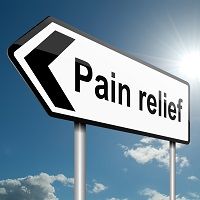Article
Fit Teens Manage Pain Better, Study Finds
Author(s):
Physically active adolescents appear to handle exercise-related pain better than inactive adolescents, a study found.

Physically active adolescents appear to handle exercise-related pain better than inactive adolescents, a study found.
The first study to determine adolescent pain relief after high-intensity aerobic exercise concludes “greater reduction in response to a pain stimulus” may result among physically-active individuals. “Pain Response after Maximal Aerobic Exercise in Adolescents across Weight Status,” published recently by the American College of Sports Medicine, reports similar rates of exercise-induced hypoalgesia (EIH) among normal- and over-weight/obese adolescents.
Lead author Stacy C. Stolzman—MPT and PhD student, department of physical therapy, Marquette University, Milwaukee—and her team assessed 62 adolescents, including 29 males and 33 females, using pressure pain thresholds (PPTs) before and after quiet rest; and pain questionnaires. Accelerometers and self-reports measured physical activity and a dual-energy x-ray absorptiometry, body composition.
The study found “no differences between the fit and unfit group for the adolescent’s clinical pain and child’s or parent’s perspectives for pain catastrophizing (negative mental response to anticipated or actual pain).” Fit adolescents, who comprised 75 percent of study participants, showed lower body mass indices and shorter “sedentary bouts” than their unfit counterparts, it adds.
The study calls physical inactivity “a major contributor” to the obesity epidemic and its associated increased pain. “Unfortunately, pain is commonly overlooked as a health outcome, despite most obese youth reporting they currently feel pain,” it states.
Researchers suggest an expanded population sample with more distinct weight groups, saying “These results significantly add to the literature by providing much needed evidence in the prescription of therapeutic exercise as a pain management tool for adolescents of varying weight and fitness levels. Additional pediatric research is warranted in identifying the effect of weight status on pain perception at rest and after exercise with multiple stages of obesity and community-based versus clinically based populations,” it adds.





